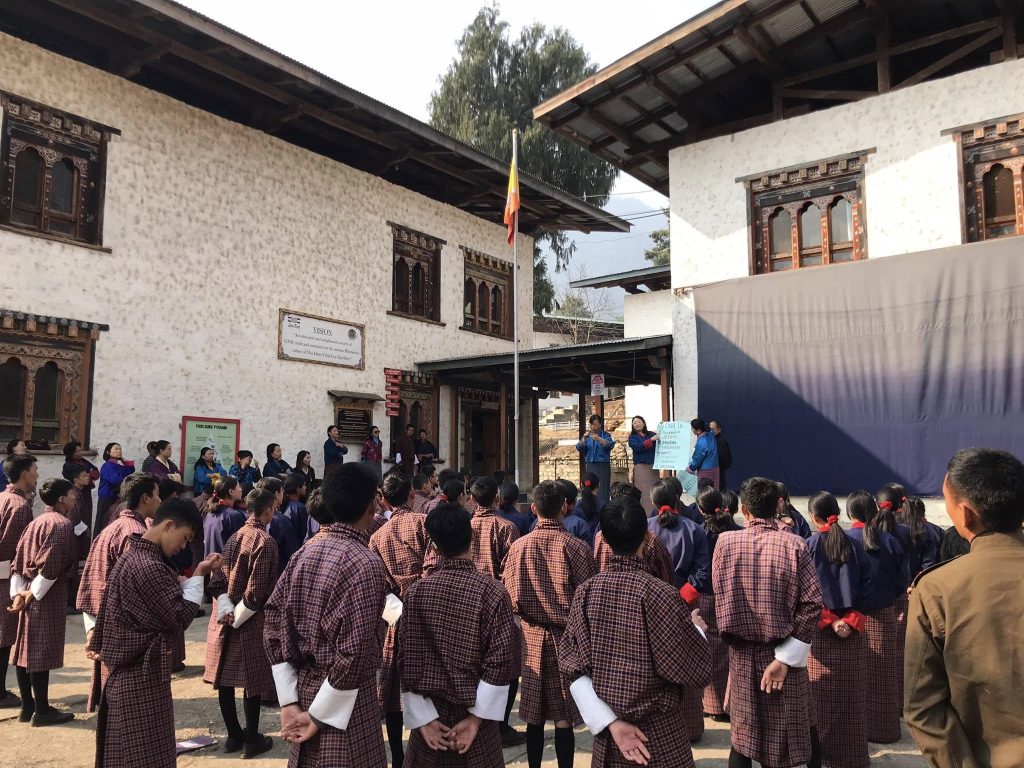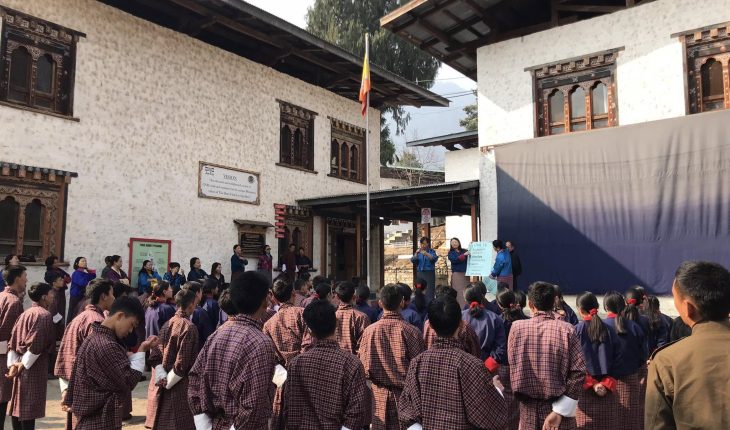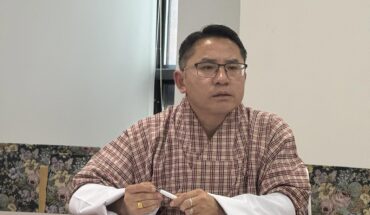
Stigma, inaccessibility, and policy gaps challenge Bhutan’s commitment to equality for its 48,000 citizens with disabilities
TIL BDR GHALLEY | Thimphu
For around 48,000 citizens with disabilities, daily life is often defined by obstacles that go unseen in policy documents but are deeply felt in homes, classrooms, and workplaces.
According to the National Health Survey 2023, 48,000 or 6.8 percent of the population lives with some form of disabilities.
However, despite Bhutan’s ratification of the UN Convention on the Rights of Persons with Disabilities (UNCRPD) and the endorsement of the National Policy for persons with disabilities in 2019, obstacles in education, employment, and accessibility continue to hinder true inclusion.
Nearly 73 percent of persons with disabilities live in rural areas, where rough terrain, limited health facilities, and cultural stigma exacerbate challenges.
It is further observed that in many villages, “disability is still associated with karmic punishment, often leading families to isolation and silence.”
The Population and Housing Census of Bhutan (PHCB) 2017 recorded 15,567 individuals with disabilities, about 2.1 percent of the population.
However, the National Health Survey 2023 placed the figure much higher at 6.8 percent—roughly 48,325 individuals—when broader definitions were applied and stigma in self-reporting was reduced.
Disabilities are diverse; 1.8 percent live with vision impairments, 2 percent with hearing difficulties, 2 percent with mobility limitations, 0.8 percent with communication disabilities, 2.4 percent with self-care challenges, and 1.5 percent with cognitive disabilities.
“Yet, only 552 individuals have so far benefited from empowerment programs,” MoESD reported, highlighting the gap between policy commitments and delivery.
Bhutan has pledged to create barrier-free public spaces, but progress has been slow. A Bhutan Broadcasting Service (BBS) report in August 2024 revealed that “only 13 percent of health facilities had accessible toilets and 14 percent had ramps.”
Rural clinics and schools were “even less equipped, and Bhutan still lacks binding national building codes for accessibility.”
Some pilot Universal Design projects in Thimphu and Paro introduced ramps and tactile signage in offices, but the MoESD admitted that “implementation remains uneven.”
Persons with disabilities has a literacy rate of just 26.6 percent compared to Bhutan’s national average of 70 percent.
The country’s inclusive education network currently comprises 24 mainstream schools and two specialized institutes; the Muenselling Institute in Khaling for visually impaired students and the Draktsho Vocational Training Centres in Thimphu and Trashigang.
A UNICEF Bhutan report reveals that only 34 percent of children with disabilities are enrolled in schools, citing barriers such as lack of ramps, braille materials, sign language interpreters, and trained special educators.
Parents often bear heavy emotional and financial burdens. Devi Maya Ghalley, a mother of four from Samtse, said, “I cannot go out because of my 20-year-old son with a communication disability. He cannot prepare dinner himself, and I cannot leave him alone as I have to look after him all the time.”
The principal of Wangsel Institute for the Deaf, Dechen Tshering confirmed that many parents report dropping out of the workforce to care for children with special need due to lack of local services.
Employment remains a major hurdle. The Department of Employment and Entrepreneurship reported that just 133 employees with disabilities were recorded among 12,197 registered businesses, despite tax incentives.
Though, civil society organizations (CSOs) such as Draktsho provide vocational training in tailoring, hospitality, handicrafts, and IT, most persons with disabilities engage in informal or home-based work.
The lack of a standardized disability certification system also prevents many from accessing benefits, specialized schooling, or workplace accommodations.
While the Ministry of Health has pledged to address this, delays continue to leave families without crucial early interventions.
Bhutan is strengthening support for persons with disabilities as part of its 13th Five-Year Plan (2024–2029). The government has allocated Nu 2 billion to implement a comprehensive social protection system, which includes targeted support for person with disabilities.
The plan aims to ensure that at least 80% of disabilities receive targeted cash support by 2028, with full coverage expected by 2030.
The National Council has also proposed several measures to enhance the well-being of disabilities.
Recommendations include increasing the number of foreign caregivers, providing accessible government information through text-to-speech technology, offering housing allotments for persons with disabilities, and introducing disability allowances.
The committee also emphasized making hospitals and clinics accessible and establishing a clear system for obtaining disability certificates
Principal Dechen Tshering said deaf education in Bhutan must transition from a model based on charity or mere integration to one grounded in human rights, linguistic identity, and cultural inclusion.
The institute has called for Bhutanese Sign Language (BhSL) to be legally recognized and promoted as the primary language for person with hearing impairment individuals in Bhutan.
He added, “Interpreter training programs must be established to ensure communication access across public services particularly in education, healthcare, media, and the justice system.”
The principal further urged the recruitment of inclusive education teachers as role models and cultural-linguistic experts to foster inclusive, authentic learning environments.
Further, he recommended that Bhutan implement a nationwide newborn hearing screening program and establish early intervention centers that expose children with hearing impairment to sign language during the critical early years of development.
“Provide parental education and sign language training to enable effective communication between children with hearing impairment and their families, and community awareness campaigns to reduce stigma and challenge misconceptions about diverse abilities,” he said.
Where government services fall short, civil society organizations have stepped in. They distribute wheelchairs and hearing aids, train sign language interpreters, and run awareness campaigns.
International partners like UNDP and UNICEF have embedded disability considerations into Bhutan’s 2024–2028 development cooperation plan, including support for accessibility audits and inclusive design projects.
The Disabled People’s Organization of Bhutan (DPOB) stressed the principle of “Nothing about us without us.”
According to DPOB program officer Younten Jamtsho, progressive policies exist, but implementation lags. He said the most immediate barrier is the lack of accessible infrastructure.
Yonted added that only few health facilities have accessible toilets and wheelchair ramps. This extends to schools, government buildings, and transportation, effectively locking people out of education, healthcare, and civic life.
“The absence of a formal disability certification system is a critical missed step. Without an official certificate, our members are denied access to rights, support, and entitlements,” he said.
He added this is not just about benefits, but of identity and validation, especially for those with invisible disabilities.
To amplify rural voices, he said DPOB organizes community-level workshops and Self-Help Groups in remote districts and leverages digital platforms to connect members with local leaders and facilitators.
The group also conducts Disability Equality Training (DET), which Yonten Jamtsho described as “powerful in shifting perceptions and building allies who understand inclusion from a human rights perspective.”
On strengthening advocacy, DPOB highlighted the need for “capacity building and institutional strengthening, including resources to expand services and technology to maintain a robust national registry of persons with special need to ensure no one is left behind.”
“We are not just beneficiaries of charity; we are partners and experts in our own right,” Jamtsho said.
“We have the lived experience and the will to work with the government to translate good policies on paper into tangible improvements in the daily lives of all persons with diverse ability in Bhutan.”
For many stakeholders, the Disability Bill represents a watershed moment.
As the Wangsel Institute emphasized, “real transformation depends on the recognition of Bhutanese Sign Language, investment in professional training, and the empowerment of the deaf community to lead the way.”
Bhutan’s Gross National Happiness philosophy emphasizes leaving no one behind. For the country’s 48,000 citizens with diverse abilities, progress has been made, but significant hurdles remain.
The passage and implementation of the Disability Bill, alongside stronger enforcement of accessibility standards, will be a test of Bhutan’s commitment to equality and inclusion.





